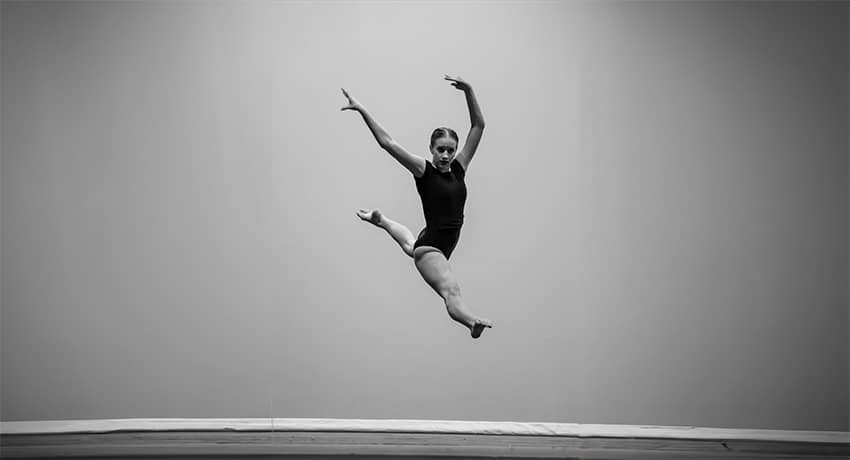The preteen days are hard enough at school without adding a scoliosis diagnosis. For Ellison McDonald, 11 at the time, wearing a back brace 18 hours a day for two years, using a rolling backpack, and having to take the elevator at school drew undesired attention — and also felt isolating.
Today, at 14, Ellison is flourishing thanks to a spinal fusion surgery that corrected her extreme curvature from 48 degrees at its worst to less than 10 degrees today. In the dance studio, you would never realize Ellison has two rods and 18 screws in her spine as she leaps, bends, and stretches on the floor.
Getting the diagnosis
The summer after fifth grade, Ellison’s pediatrician and school nurse suggested she visit an orthopedic spine surgeon after a routine scoliosis check. At the time, Ellison had a lot of back pain and could barely sit straight at school. Even short stints of sitting spurred pain. The family later discovered scoliosis was a hereditary trait in the family with new diagnoses of Ellison’s two siblings.
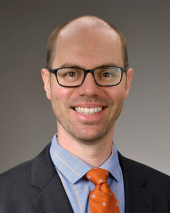
Ellison visited Timothy Borden, MD, pediatric orthopedic spine surgeon at UT Physicians, for his expertise. He diagnosed a classic S-shaped scoliosis, which comprises three curves in the spine. One was in the upper part of the thoracic spine. The two bigger curves, the thoracic spine and the lower thoracic lumbar curve, were the most concerning. Borden suggested scoliosis bracing, which can be effective to keep the curvature from increasing. A curve of 25 degrees is the beginning range requiring a back brace. Ellison’s curve was 39 degrees.
“There was concern from the outset that her curve might require surgery, but we treated her with full-time bracing for two years,” said Borden, assistant professor in the Department of Orthopedic Surgery at McGovern Medical School at UTHealth Houston.
Life with a brace
Ellison admits she was a little scared when she heard she needed a back brace. She didn’t know if it was a flexible brace or if she’d be able to dance in it. Dance is her passion, so that would have been a challenging trade-off.
Ellison’s mom, Shawntel McDonald, said it was traumatizing at first, as Ellison adjusted to wearing the brace. Ellison would lay down in the brace, and her parents would tighten it to a certain mark, which would cause her to scream in pain.
“The brace would push into the S curve from both sides. It’s like having a fist in her ribcage consistently putting pressure into it,” Shawntel said. “To do that for 30 seconds doesn’t feel good, but to do it for 18 hours a day is a lot.”
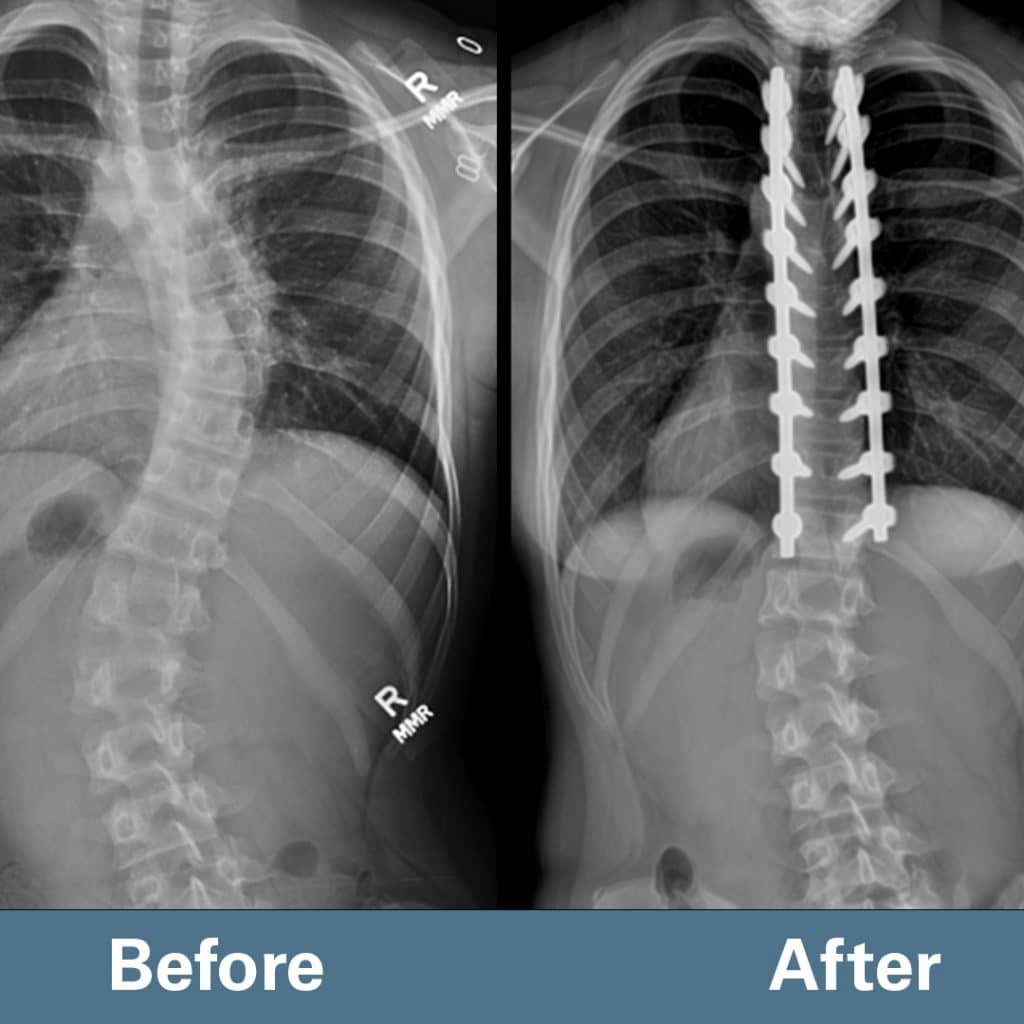
Over time, Ellison increased the brace a few hours each day to get to 18 hours. She decided to sleep in the brace and use the six hours without the brace during the day to take her dance classes.
“I was not comfortable with my brace being shown, so I wore leggings to school every day and ginormous T-shirts over my brace,” Ellison said. “I tried to hide it. A lot of kids thought it was fake, and that I just wanted attention with my rolling backpack. I was moving to junior high so kids from my elementary school saw me show up all of a sudden differently, and they were like, ‘That’s weird.’”
During the two years of bracing, Ellison lost quite a bit of muscle strength in her core and back, since the brace provided support to stand and sit upright versus using those muscles. It also was more difficult for her to dance once she took the brace off, because her ribs would hurt.
Next step: surgery
Ellison’s curve slowly increased to 48 degrees during the two years of bracing, even though she wore it consistently. Borden believes the bracing did slow the progression, and the curve would have progressed more quickly without the brace. Considering Ellison was still growing, and the curve was 48 degrees, the next step was spine surgery.
“I was terrified,” Ellison said. “I was like, ‘Wait, can I do back bends — or will the screws pop through me?”
Borden said the scoliosis team at UT Physicians reviews every spine surgery together to ensure they’re doing the best for each child. It’s not a one-size-fits-all approach, he said. For Ellison, they decided to do a selective thoracic fusion, based on her curve size, curve location, the history of her curve increasing, and the family’s preferences.
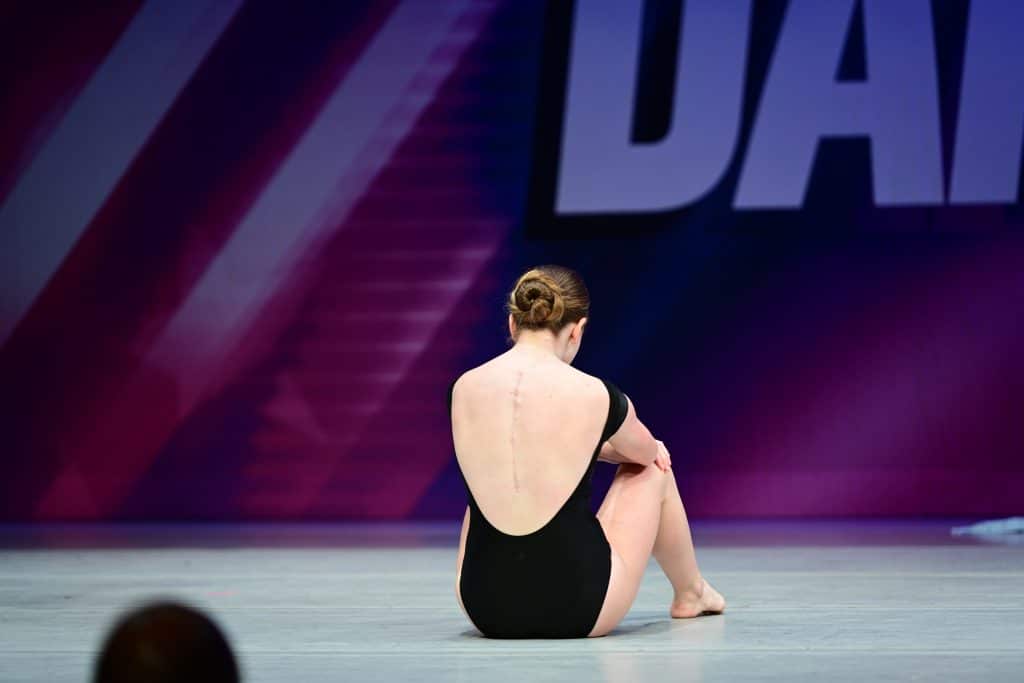
“By doing this selective thoracic fusion, we’re able to correct the big curve in the thoracic spine, but also improve the lower curve without operating on it,” Borden said. “This allows for continued motion in that area below where we do the surgery to maximize her ability to do the things she enjoys, particularly dance.”
During the four-hour surgery, Borden inserted two rods and 18 screws in order to correct her spinal deformity. Ellison has a 11-inch scar down the middle of her back as a result. “The hope is that this procedure prevents the curves from getting any bigger, provides Ellison with a spine that does not need further surgery, and gives her a full, active, rich life into adulthood,” Borden said.
Life after surgery
Ellison was an extraordinary patient beating every typical milestone. She was in the hospital just three days, versus the average seven to 10 days. With each follow-up appointment, they checked her progress and continued to add to her movement, flexibility, stretching, or activity level. With each appointment, she earned more clearances.
“One of my favorite scriptures says, ‘For with God, nothing shall be impossible,’” Ellison said. “And that’s what pushed me through it. I knew I could get through this. It pushed me from the moment I first got in the hospital bed.”
A few hours after surgery, the nursing team wanted her to stand. Not only did Ellison stand, but she walked the whole hospital floor the evening of her surgery. The nurse was surprised and said it was not normal to be up and walking so quickly.
“I think her dance background helped, and the strength she had from training made a difference,” Shawntel said.
Ultimately, Ellison was dancing two months after her spinal fusion. That milestone usually occurs at six months or more.
“She’s a strong kid, with a great attitude and family support system,” Borden said. “And she was really motivated to get back to dancing!”
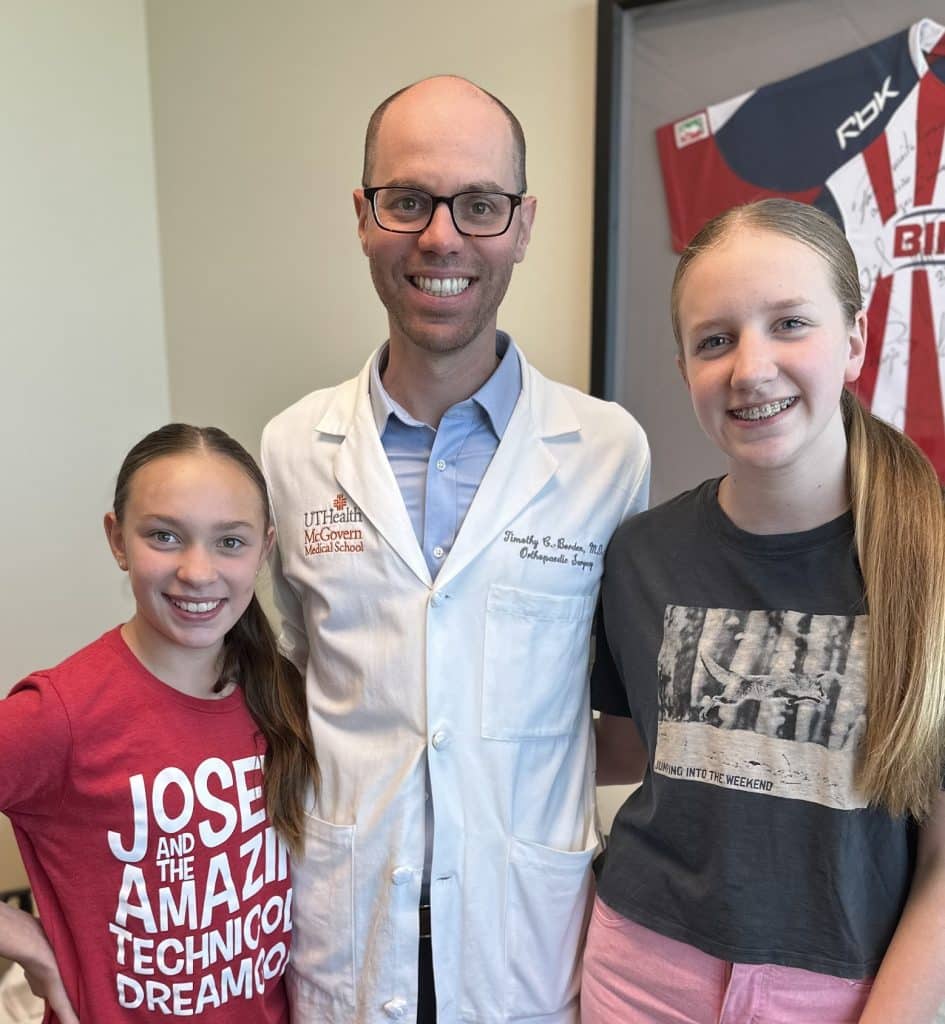
When Ellison first returned to dance after surgery, she was cautious. But once she started moving, she said it felt normal — to the point she doesn’t remember she has rods and screws in her back. Today, she dances nearly 15 hours a week between her studio dance classes and competitive dance in jazz, ballet, tap, lyrical, contemporary, hip hop, technique, and tumbling.
At her one-year follow-up appointment in June 2023, Ellison’s curve is less than 10 degrees — which doesn’t even fall into scoliosis range. The lower curve also has straightened as a result of doing surgery on the middle part of the spine.
“Dr. Borden is phenomenal. He knew exactly what was needed,” Shawntel said. “A procedure invasive enough to give her the correction she needed, but he also knew where to stop so she could have muscle strength and flexibility.”
Advice to others
As Ellison describes the most challenging aspect of having scoliosis, it’s not the surgery or even the recovery period. It relates to the friends she lost moving from elementary to junior high school.
“It was kind of hard, because they judged me. But I’m okay, because I found better friends,” Ellison said. “I love my friends now.”
For others diagnosed with scoliosis, Ellison recommends they not be afraid to be themselves. She feels like she changed a lot.
“It’s definitely not as scary as you think it is,” Ellison said. “Going through the process, there are a lot of people out there that will be there for you. Just find those good friends.”
As a parent, Shawntel said there were so many unknowns for the family. What will a year from now look like? Will Ellison be able to dance? If so, what does that look like?
“I would tell other parents the possibilities are endless,” she said. “Even if it’s not exactly how you imagined it to be, there are new roads and avenues that come up to allow your child to find the same joys in things they did before surgery.”
Ellison’s younger sister, Emily, also is being monitored for scoliosis by Borden at age 11. They discovered her curve increased from 20 degrees to 30 degrees in June 2023. Emily will start wearing a brace until she stops growing or reaches surgery threshold. Her older brother has scoliosis as well, but didn’t need a brace.
An average of 3%-5% of children have scoliosis. One of the challenges of untreated scoliosis as people age, Borden said, is the curve will become bigger, get stiffer, and be harder to treat. On top of that is a higher complication rate. Borden said this emphasizes why they try to identify children with spinal deformity and address their needs early.
“A lot of people are very apprehensive about surgery, because they think they’re not going to be able to do anything,” Borden said. “We expect kids to get up, move, and get back to their same level of sports and activities they were doing before surgery.”

